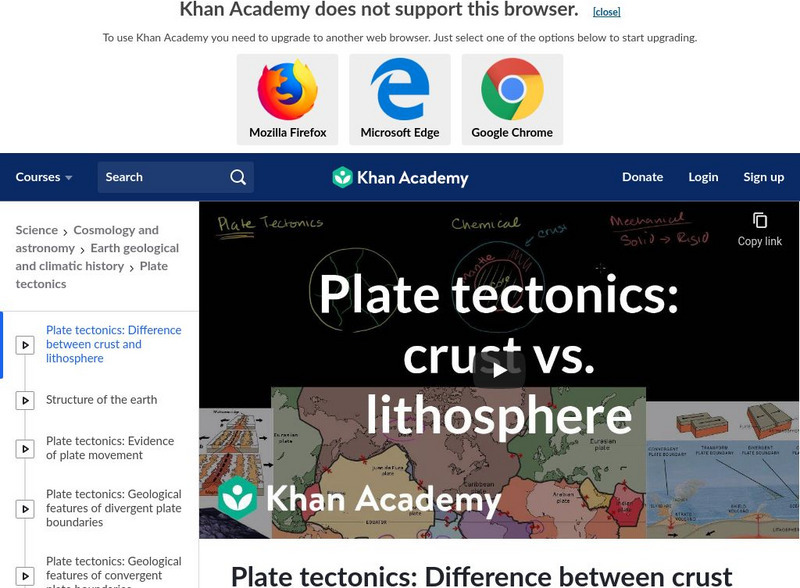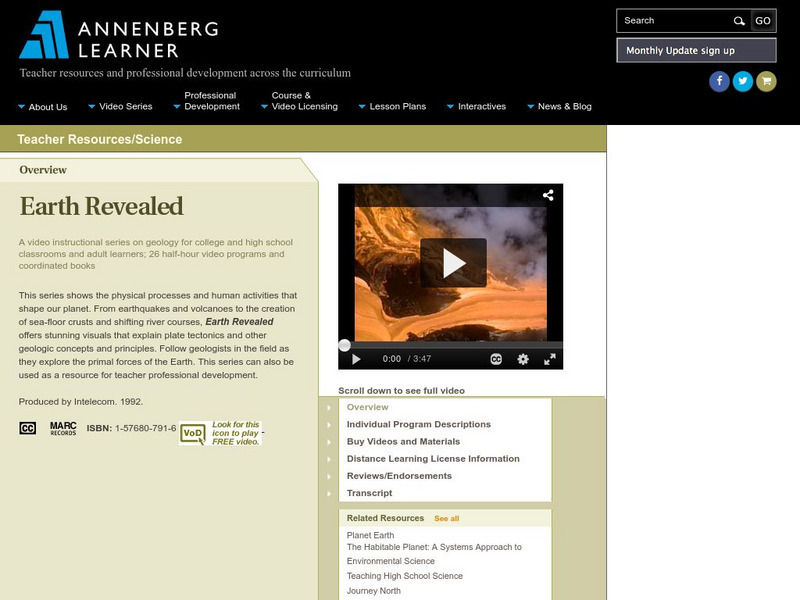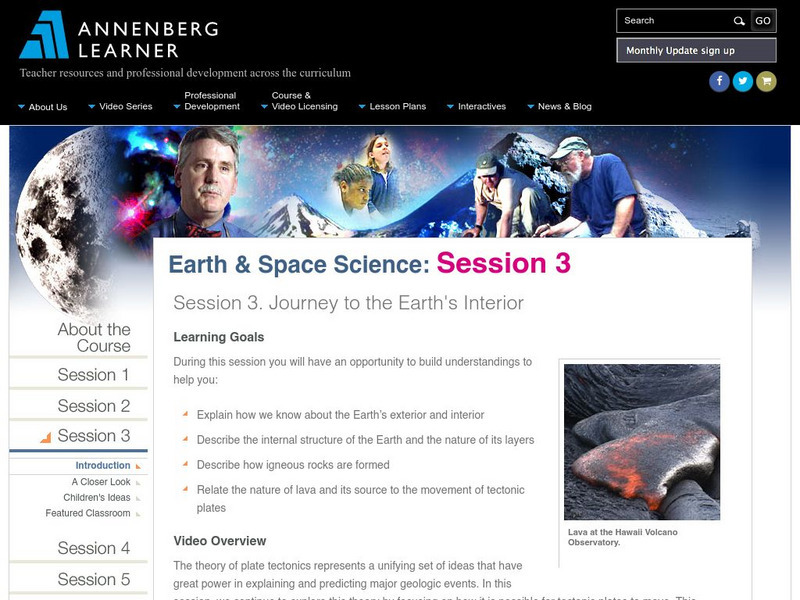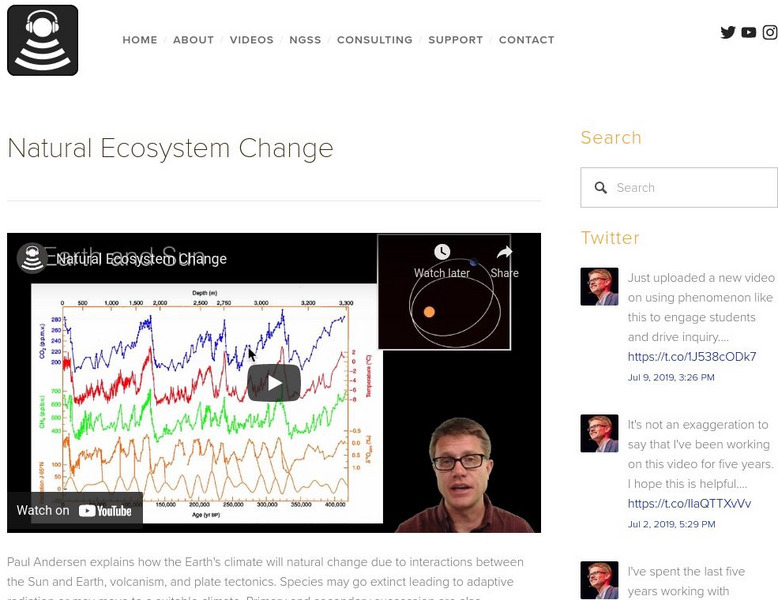Hi, what do you want to do?
Khan Academy
Hawaiian Islands Formation, Cosmology and Astronomy
Sal explains the formation of Hawaii and the theories behind the formation of a boundary-related hot spot. He debates the concept that the hot spot is traveling along with the plate.
TED-Ed
Why Do Buildings Fall in Earthquakes?
There are few natural phenomena as startling as an earthquake, and depending on the building you're in, these experiences can be downright terrifying. Follow along as this video explores the factors that determine how a building...
Physics Girl
The Unusual Formation of the Hawaiian Islands
How are the Hawaiian Islands different from other island chains? Discover the surprising geologic history of Hawaii with a video from a cool physics playlist. The narrator takes a hike with some geologists and discusses mantle plume...
TED-Ed
Why is Mount Everest so Tall?
Many years ago, when the Indian plate collided into the Eurasian plate, the highest mountain on Earth was formed. But what gives Mount Everest its shape? Watch an informative video to learn what factors make the...
Curated OER
How a Tsunami Forms
This kid knows his stuff. A middle schooler explains the five-step process that occurs as a tsunami forms. He relates his tsunami research to the events that occurred in Japan in 2011. The question he poses can be discussed by you class....
PBS
Making North America | The Cascadia Subduction Zone
Scientists discovered a rain forest covered in sand and saltwater residue. This led to a collection of core samples and a rather intense prediction for the future of the American Pacific Northwest. Part of a larger series on the story of...
Howard Hughes Medical Institute
Holmes' Model of Convection
Convection currents do more than just bake a cake. A quick lesson demonstrates the convection currents of the earth and how they contribute to continental drift. An animation illustrates the movement of the currents and demonstrates how...
Be Smart
How Does A Canyon Become Grand?
Ah, the Grand Canyon ... ain't it grand? The narrator of a video from PBS Digital Studios explains, in detail, how the Grand Canyon was formed over millions of years.
Howard Hughes Medical Institute
Continental Movement Over the Past 200 Million Years
Go for a ride on the continental drift. A video animation shows the movement of land over a period of 200 million years. The lesson instructor explains the shift during the animation and gives pupils a unique viewing perspective to...
Khan Academy
Khan Academy: Plate Tectonics: Difference Between Crust and Lithosphere
The instructor explores the plates in the makeup of Earth's surface. Evidence and theories about plate tectonics are featured. [8:00]
Annenberg Foundation
Annenberg Learner: Earth Revealed
To support or supplement a course in earth science or geography, Annenberg Media offers twenty-six Videos on Demand (VoDs). The topics coverd range from why Earth can sustain life, to plate tectonics, to rock types and landscape...
Smithsonian Institution
National Museum of Natural History: Qrius: Volcano Geochemistry Windows to Earth's Interior
Geologist Dr. Elizabeth Cottrell, describes why she considers volcanoes "lungs of the earth" in this webcast. [29:15]
Annenberg Foundation
Annenberg Learner: Earth and Space Science: Journey to the Earth's Interior
Material to begin an exploration of the Earth's interior. An hour-long video is accompanied by learning goals, an outline and overview, details on igneous rock, seismic waves, and the Earth's layers, and ideas for teaching this unit in...
Bozeman Science
Bozeman Science: Geology
Paul Andersen explains how rock is formed and changed on the planet. The video begins with a brief description of rocks, minerals, and the rock cycle. Plate tectonics is used to describe structure near plate boundaries. Hot spots and...
Bozeman Science
Bozeman Science: Natural Ecosystem Change
Paul Andersen explains how the Earth's climate will natural change due to interactions between the Sun and Earth, volcanism, and plate tectonics. Species may go extinct leading to adaptive radiation or may move to a suitable climate....
Khan Academy
Khan Academy: Science Bulletins: Mapping the Heat Beneath
As seismic waves from earthquakes pass through the planet, their patterns can reveal hidden dynamics-hotspots, deep-diving rock, melting mantle-in Earth's interior. An array of seismometers that's being installed across the United States...
PBS
Pbs Learning Media: A Land Born in Fire
In this Nature video, follow geologists as they retrieve samples from a fresh batch of Kilauea's molten lava. [5:25]
PBS
Pbs Learning Media: Creating an Island Paradise
In this video segment from Nature, learn the geological process by which the next Hawaiian island will be formed. [1:12]
Sophia Learning
Sophia: Geology: Pacific Ring of Fire: Lesson 1
This lesson introduces and explores the Pacific Ring of Fire. It is 1 of 3 in the series titled "Geology: Pacific Ring of Fire."
Science for Kids
Science Kids: Earth Videos: What Is an Earthquake?
Narrated animation explaining the forces inside the Earth that can lead to earthquakes. (Length: 1 min. 39 sec.)
PBS
Pbs Learning Media: How to Build an Island From Scratch
Learn how the Hawaiian Islands were formed by a geothermal hotspot and resulting volcanic activity in this video segment from Nature. [0:43]
Sophia Learning
Sophia: Geology: Pacific Ring of Fire: Lesson 2
This lesson introduces and explores the Pacific Ring of Fire. It is 2 of 3 in the series titled "Geology: Pacific Ring of Fire."























